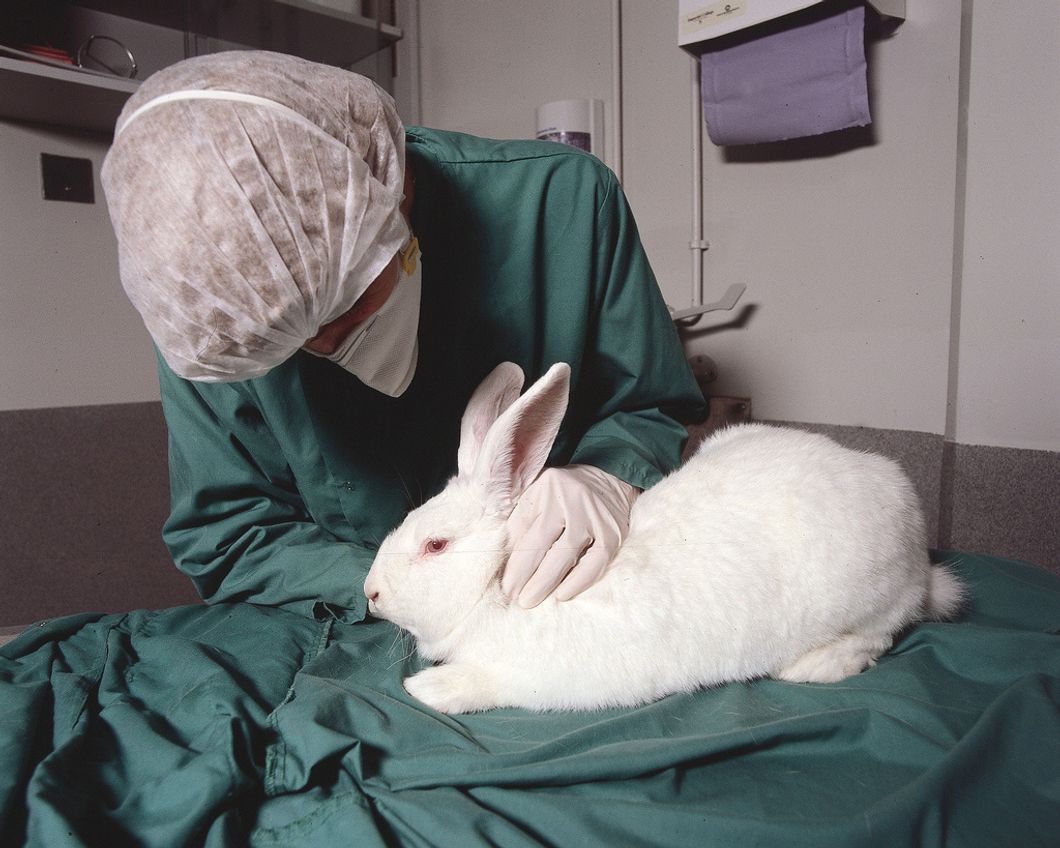A Brief History of Animal Testing
Animal testing officially began for cosmetic companies in the late 1930s, when the Food, Drug, and Cosmetic Act was signed into law. This law allowed for companies to conduct testing of their products on animals to make sure their cosmetics were safe for human use. As time went on, more and more tests were used on animals for decades. Some of these tests included were the Draize eye and skin irritant tests, which when used on animals, caused intense suffering and oftentimes death.
In the late 1990s, the United Kingdom completely banned animal testing for companies that sell cosmetics and their ingredients. The United States and Canada were affected by the presence of the Coalition for Consumer Information on Cosmetics, which was a collection of animal rights advocates that worked for the cruelty free "Leaping Bunny" to be placed on cosmetics that genuinely were creations of brands that did not test on animals whatsoever.
The Interagency Coordination Committee on the Validation of Alternative Methods (ICCVAM) Authorization Act was signed in 2000, which initiated the research for and formation of alternative testing methods for products. Four years later, The Organization for Economic Cooperation and Development (OECD) approved of methods to test products' effects on human skin without using animals. States such as California, New Jersey, and New York all placed state laws that companies must use these confirmed alternative methods. The European Union, Israel, Norway, India, New Zealand, and many other countries banned the testing of animals by cosmetic companies, and many passed legislation to phase out the sale of brands that do test on animals.
Animal Testing Today
Since we live in such an advanced world, it would make sense that we have the technology to create more synthetic tests that do not require animals to be tested on in order to generate safe products for humans. This is true, but the sad truth is that many companies today do not take advantage of these new forms of testing because they are more expensive. Many big brands and corporations still prioritize profit over the quality of their products and the lives and safety of innocent animals.
There are several name brands that are completely cruelty-free, such as Burt's Bees, Dermalogica, and Jeffree Star Cosmetics, which have all been Leaping Bunny approved. However, there are other brands that claim to be cruelty-free, that still sell to countries that require animal testing by law. Some of these brands include Clinique, Maybelline, and OPI. For example, even though Clinique advocates for the end of animal testing and uses alternative methods within the United States, it still states directly in its policy that it will test on animals when required by the law of other countries. Their official statement on the Clinique website is " We do not conduct animal testing on our products or ingredients, nor ask others to test on our behalf, except when required by law." This means that no matter how much a brand says that they are cruelty-free, they might not be outside of the United States. These are brands that value their profits more than they value their transparency with their consumers and the safety of animals.
What Can I Do To Help?
To help bring an end to animal testing, there must be a much greater awareness of what practices are actually still in place. Being conscious of what brands you buy from, and buying from officially certified cruelty free brands, will help push companies that still test on animals, inside and outside of the United States, to change their policies. Informing others about the issue and advocating for their boycott of non-cruelty free brands will help as well. Websites such as www.leapingbunny.org, www.peta.org, and www.crueltyfreekitty.com are good databases for brands that do and do not test on animals, and they help explain the policies of certain brands to help you make more conscious decisions before you buy your cosmetic products.Resources:
https://www.crueltyfreekitty.com/about/

















